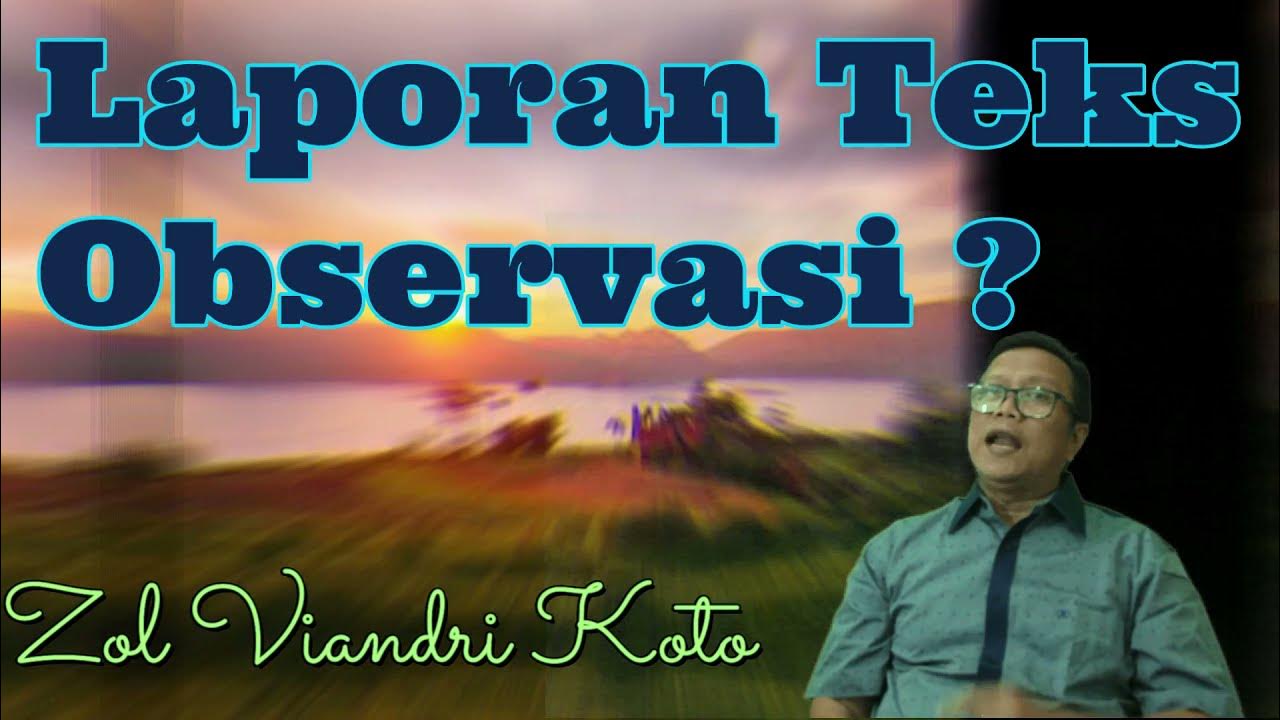Struktur & Contoh Teks Laporan Hasil Observasi #kelas10 #sma #smkbisa #kurikulummerdeka
Summary
TLDRIn this lesson on the structure of an observation report text, the teacher guides 10th-grade students through the key components of writing an effective report. The focus is on understanding the organization of the text, which includes the General Statement or Classification, Description of Parts, and Description of Benefits or Conclusion. Using the *Orchid Grasshopper* as an example, students learn to analyze and write structured reports by identifying scientific details, physical traits, life cycle, and practical benefits. The teacher emphasizes the importance of clarity and sequential writing for better comprehension.
Takeaways
- 😀 Students need to have the observation report book for better understanding of the lesson. A download link is provided for those who don’t have it.
- 😀 The focus of the lesson is on understanding the structure of an observation report text.
- 😀 The main learning goal is for students to recognize and analyze the structure of the observation report text.
- 😀 A well-organized structure helps readers understand a text more easily and clearly.
- 😀 The structure of an observation report includes three main parts: General Statement (Classification), Description of Parts, and Description of Benefits (Conclusion).
- 😀 The first part of the report is the General Statement, which introduces the object of observation, such as its scientific name, classification, and habitat.
- 😀 The second part, Description of Parts, includes detailed information about the object like its physical characteristics, diet, life cycle, and habits.
- 😀 The third part is the Description of Benefits, where the usefulness of the observed object to humans or nature is discussed.
- 😀 The Orchid Grasshopper example is used throughout the lesson to illustrate the structure of an observation report, detailing its body parts, diet, life cycle, and benefits.
- 😀 The teacher emphasizes that the structure of a report must be organized in a neat, sequential way to make the text understandable.
- 😀 The lesson concludes with a recap of the structure and encourages students to like, share, and subscribe to support further learning.
Q & A
What is the primary focus of the lesson?
-The primary focus of the lesson is understanding the structure of an observation report text, with a specific example using the 'Orchid Grasshopper' report.
What should students do before the lesson begins?
-Students should have the textbook in hand, and if they do not have it, they can download it using the provided link in the video description.
What are the learning goals of this lesson?
-The learning goal is for students to recognize and analyze the structure of an observation report text.
How does the teacher explain the concept of 'structure' in writing?
-The teacher explains that structure refers to the order in which a text is written, which helps readers understand the content more clearly.
What are the three main structures in an observation report text?
-The three main structures in an observation report text are: 1) General Statement or Classification, 2) Description of Parts, 3) Description of Benefits or Conclusions.
What is included in the General Statement or Classification section of an observation report?
-This section includes an introduction to the object being observed, such as its scientific name, general classification (e.g., insect, mammal, etc.), and its habitat.
Can you give an example of the General Statement or Classification from the Orchid Grasshopper report?
-In the Orchid Grasshopper report, the General Statement includes details such as its scientific name (Hymenopus coronatus) and a description of its shape and color, which resemble an orchid flower.
What does the Description of Parts section cover in an observation report?
-The Description of Parts section provides detailed information about the object's body parts, diet, life cycle, habitat, unique habits, and other relevant features.
How does the Description of Parts section in the Orchid Grasshopper report provide information?
-The Orchid Grasshopper report describes its body parts, such as the head, thorax, and abdomen, its body length, color, food sources (such as smaller insects), and its life cycle stages (eggs, nymphs, and adults).
What is discussed in the Description of Benefits or Conclusions section of an observation report?
-This section explains the benefits or significance of the observed object, both for humans and for nature in general.
What are the benefits of the Orchid Grasshopper mentioned in the report?
-The Orchid Grasshopper helps humans by eradicating pests and is also appreciated for its beauty, which makes it a popular insect to keep.
What final takeaway does the teacher want the students to have from the lesson?
-The teacher emphasizes that the observation report text is structured into three main sections: General Statement/Classification, Description of Parts, and Description of Benefits/Conclusions.
What does the teacher encourage students to do after watching the video?
-The teacher encourages students to like the video, share it with their friends, and subscribe to the channel for more educational content.
Outlines

This section is available to paid users only. Please upgrade to access this part.
Upgrade NowMindmap

This section is available to paid users only. Please upgrade to access this part.
Upgrade NowKeywords

This section is available to paid users only. Please upgrade to access this part.
Upgrade NowHighlights

This section is available to paid users only. Please upgrade to access this part.
Upgrade NowTranscripts

This section is available to paid users only. Please upgrade to access this part.
Upgrade NowBrowse More Related Video

Materi Teks Laporan Hasil Observasi Kelas 10 l Bahasa Indonesia

Teks Eksposisi | Bahasa Indonesia SMP

UNSUR BASA TEKS LAPORAN KEGIATAN (9 SMP BAHASA JAWA)

LAPORAN OBSERVASI AIA ANGEK (HOT SPRING) SMA KELAS X #laporanhasilobservasi #observasi

BAHASA INDONESIA KELAS 8 HALAMAN 1-8 SEMESTER 1 KURIKULUM MERDEKA

BAHASA INGGRIS KELAS 9 - CHAPTER IX - WHAT IS IT - PART 1 HALAMAN 165 - 167 | REPORT TEXT
5.0 / 5 (0 votes)